Mäpuru Memories
Margaret-Anne Gooch
Recently I was fortunate to visit an aboriginal town called Mäpuru, situated in North East Arnhem Land, a remote part of Northern Territory, Australia. As part of their Global Program, Ceres Environmental Park (https://ceres.org.au/), Melbourne, organizes basket weaving and cultural engagements with the local Yolngu women to help the visitors to experience and understand Yolngu culture. There the Yolngu women teach visitors how to weave baskets from local pandanus leaves, which are dyed with plants indigenous to the area.
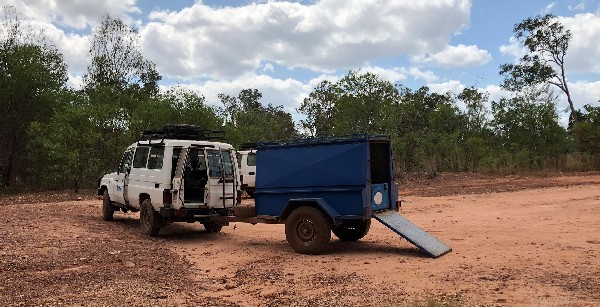
I went on a 12 day workshop with a group of 17 women, two of whom were facilitators employed by Ceres, who were well-trained as leaders in the outdoor activities needed for the trip. As well as women-only programs, Ceres conducts trips for both women and men together where the men take part in living on country and bush survival activities. Below I will write about my experiences from Darwin back to Darwin with a focus on my time at Mäpuru.
We all met in Darwin at 8 a.m. and before climbing into the two 8 x seater 4WD Troopies, we sat in a circle and introduced ourselves, starting the next 12 days by getting to know each other. Three hours out of Darwin we arrived at a township called Katherine, where we had lunch and made our last phone calls to our families. A few kilometers south of Katherine, we turned onto the Central Arnhem Highway heading northeast. On our first night, we camped on an escarpment overlooking a beautiful panoramic valley. There was a sense of anticipation amongst everyone, as though they were thinking "This is really happening!"
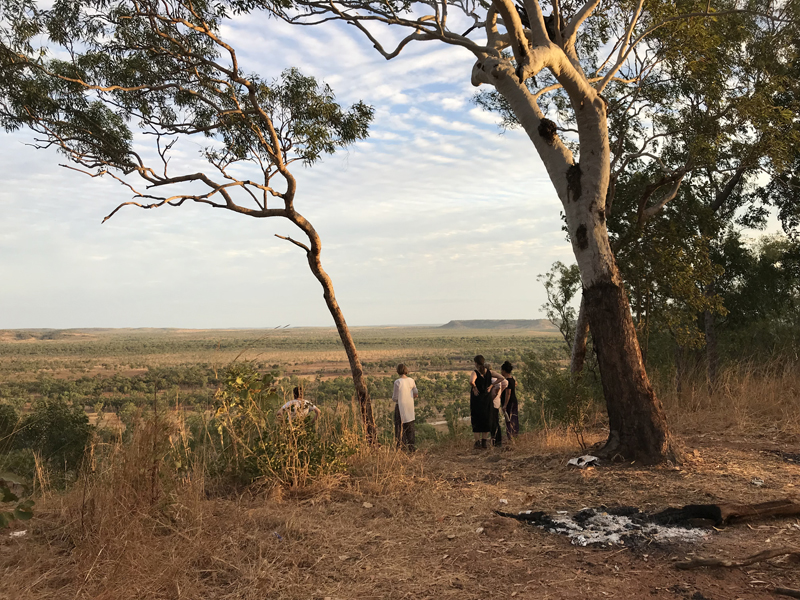
Being a relative loner, spending 12 days in close quarters with 17 women was a fairly new experience for me. I had never put up a tent before, except for one practice run on our front lawn before leaving Melbourne. Setting up our tents in the waning light of evening was a challenge in itself for me. I learnt not to set up on rocky ground, for two reasons related to a good night’s sleep and the ease of securing tent pegs into the earth. I had many kind offers of help which I gently and politely declined, as even though I was an older grey-haired lady, I just wanted the satisfaction of doing it myself. To be succinct, this whole adventure was wonderful in every way for me.
The first night we had a delicious meal made over an open fire, assisted with head torches and many willing helping hands. Later the leaders introduced us to some more facts about what we might expect when we reached Mäpuru the next evening, plus some elemental guides to etiquette when relating to the Yolngu women, respectfully and not inadvertently cause offence through lack of cultural awareness.
Eight o'clock the next morning saw us on the road again. We started the day-long journey to Mäpuru. From our first night’s camp, the road became rougher and sitting in the back of the Troopie became seriously strenuous. After a few hours we passed through a cattle station called Mainoru, which also includes a small store with a petrol pump, a camping ground, and a crowd of ‘grey nomads’ parked for a stopover. We were told this was the last place we could buy anything, which actually wasn’t much. Moving on, we lunched in the sun on the banks of the Goyder River under an enormous bridge. We were warned not to go into the river lest crocodiles were lurking there.
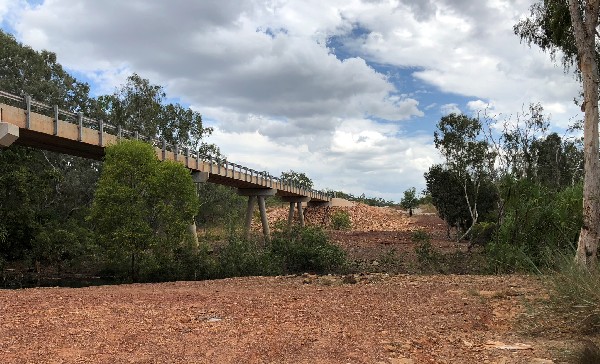
Later we turned off the Central Arnhem Highway to head true north in the direction of Elcho Island on a small dirt track that would eventually lead us to Mäpuru. The two leaders, slight of build, proved to be strong and fit, adeptly driving us over creeks, gullies, potholes and generally a very weather-worn eroded track. I admired the way they drove the big 4WDs the whole two-day trip really efficiently, confidently and with ease.
| Figure 4. Driving the Central Arnhem Highway | ||
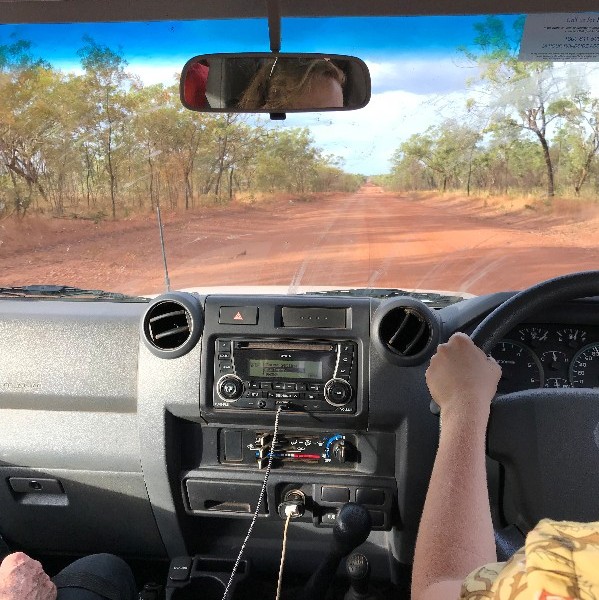 |
||
| Photograph Copyright by Sarah Bunn |
It was an excellent trip. I enjoyed getting to know the other women going to Mäpuru. The group was a good group with the whole spectrum of personalities, all strong women, but from loud to soft in expression. Three women in particular had gone to school together in regional Victoria and all sang beautifully together. Their relationship was remarkable, standing out as an example of total acceptance of each other in an honest, securing way. These women led the singing in the Troopie that I was in, and amidst much song, laughter and fun, we all whiled away the bumpy hours together with much enjoyment.
We drove through basically flat open woodland with a mixture of vegetation from eucalyptus and palms to cycads. We arrived at Mäpuru, driving slowly into the little township where several of the Yolngu residents waved to us as we moved towards the visitors’ area --our home for the next 8 days. It was a surreal moment and on reflection, I know I did not know what to expect, but Mäpuru met all those unknown expectations, and a feeling of welcome and naturalness pervaded.
| Figure 5. Our Cooking Fire | Figure 6. Our Tents at Mäpuru |
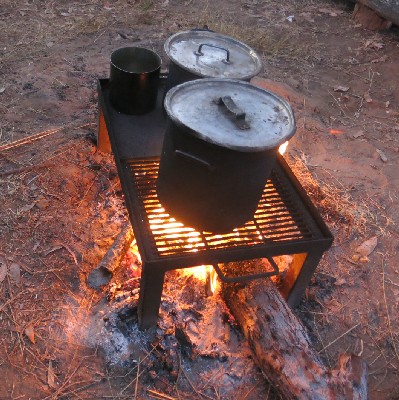 |
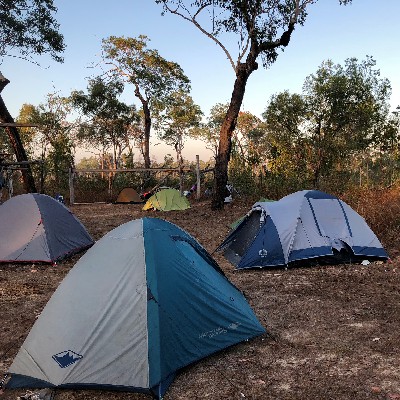 |
| Photograph Copyright by Rebecca Avery | Photograph Copyright by Margaret-Anne Gooch |
Like the previous afternoon, our priority was to put up our tents in the visitors’ area which was, I think, mown and bordered by long dry grass and a few 'Woollybutt' eucalyptus (E. miniata) and other trees. Our tents formed a large, loose and spacious U-shape around the shelter area where our meals were prepared and cooked on the open fire nearby. Our food was stored here as well. A Blue Winged Kookaburra chortled to us in a foreign kookaburra language unlike its southern counterpart, the Laughing Kookaburra. As the evening closed into night, and the crows went to bed, a new moon appeared amongst very brilliant stars. The sky and stars seemed so close and nature so tangible. Understandably this is a big part of Yolngu culture. Before we went to our tents, our facilitators gave us a rundown of how to approach the Yolngu weavers the next day and the ethics of Yolngu culture in this situation.
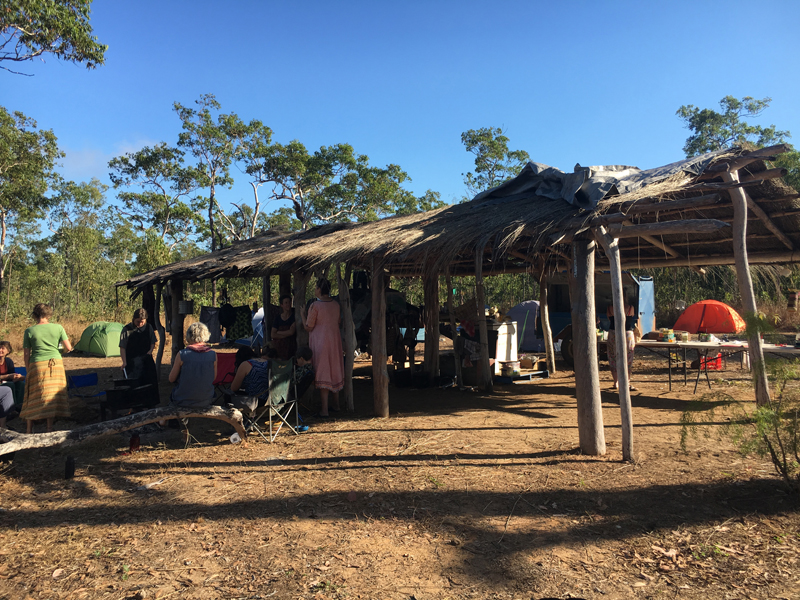
Early the next morning the Arnhem Weavers started to appear on the mats beneath the larger shelter a few metres from the visitors’ area. They sat with different members of their family groups and began weaving their baskets. We had been encouraged to sit near a weaving teacher and she would show us how to start weaving a basket using pandanus leaves, stripped and dyed with natural dyes from local indigenous plants' roots, leaves and bark collected in the area. I felt very excited and nervous at the same time as I wanted to show the utmost respect towards these women and their culture. I had been warned not to ask too many questions, which is my natural inclination, and I felt tense but determined not to do this. In this fear of being impolite, I realised that I just had to be myself, and that was enough, and that is who these wonderful women wanted to get to know, not someone 'trying to be the perfect visitor'. I found they were totally accepting and would know if I was being an unreal person. However, it was a relief not to 'try hard' but to allow things to take their own time and momentum. A good lesson.
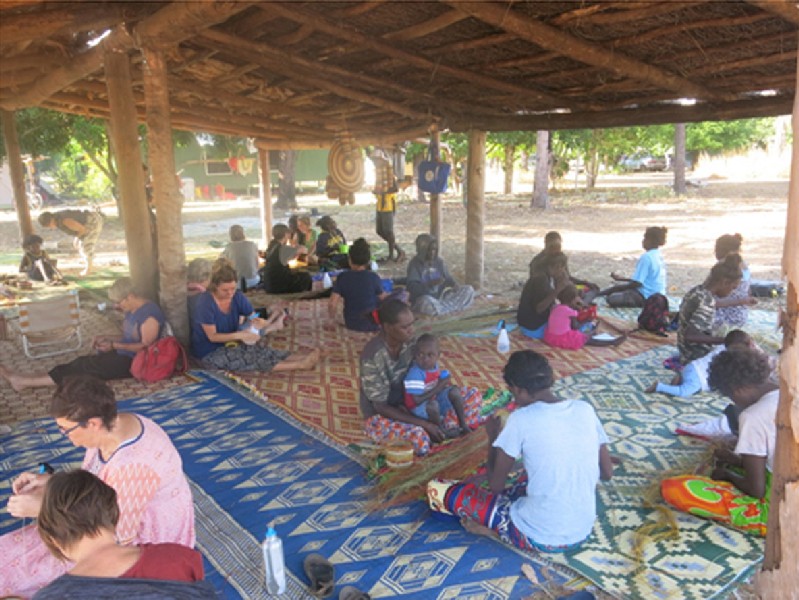
The weavers taught by example and by instruction, which was perfect as they knew what we needed to know and trusted we would pick it up. Everything seemed so relaxed and natural and easy to follow. I almost had to pinch myself to realise that this was real, we were thousands of miles from home and this was so special– we were being taught by women whose ancestors dated back thousands of years in this land, and by comparison, mine dated back to a mere two hundred or so years. How secure they must have felt, how much they must have felt they belonged to this place, how much this was their home. To look after this land must have been, and still is, a great passion steeped in their culture– a great passion to pass on to the generations ahead, the knowledge they hold of their culture, a small part of which they were freely sharing with us; I felt very humble with these thoughts.
One thing that stood out to me , as the family groups sat together in different areas beneath the weaving shelter, was that the older children looked after the young ones really well and were expected to do so, as their mothers and grandmothers worked, teaching the visitors (us). They were earning money to help sustain their community in a self determinative way. They could teach us all something precious, something that they had to give us from their natural world in a cultural exchange, rather than what has happened since colonization, the visitor’s 'way' being taught to them, so they would have a 'better' life. The latter is the wrong way around, because the reality is, indigenous peoples have already inherited a 'better' life and have much to teach us if we are open enough to receive their knowledge and experience. I noticed this trait in the way the young children looked after the younger children; I noticed it in their fun-loving smiles and their innate strength of character, and I noticed it in the care I was given when I accidently bumped my head on a pole. I also noticed that the twenty-first century was very much alive here, as most local people had mobile phones and used the internet regularly through satellite services, which showed me they are going forward to the future, meeting it with an open mind.
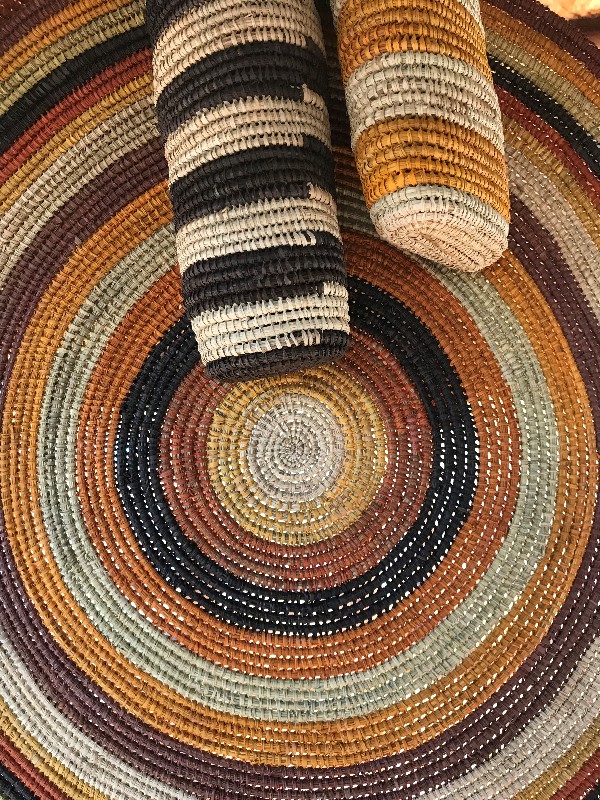
Interspersed with the weaving, different excursions took place, which were a natural everyday event for the Yolngu weavers. Some examples were to collect dye materials, to fish, and to collect mangrove worms, a delicacy, tasting similar to oysters. One day we drove to the coastal mangroves and split into two groups - one group went fishing with some of the Yolngu women. I went with the mangroves group. We followed the women, ankle deep in grey mud, to fallen tree trunks and watched them confidently take to these with an axe, revealing cavities lined with a crusty substance in which watery, milky-white worms lived. The women carefully extracted the worms by pulling them gently. They ate half of them, and the other half went into a bucket to share with their community. I wanted to partake of everything, so I ate about five worms and could appreciate that they were considered a delicacy. I returned to the township in a 4WD with all Yolngu women and a little child, with whom I played a clap hands game. On other days we all went out to gather pandanus leaves, which we were taught how to process for weaving, or went out to gather roots and leaves for dyeing.
| Figure 10. The Mangrove Mud-Flats | Figure 11. The Village Waterhole |
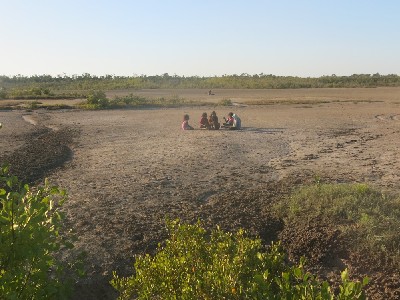 |
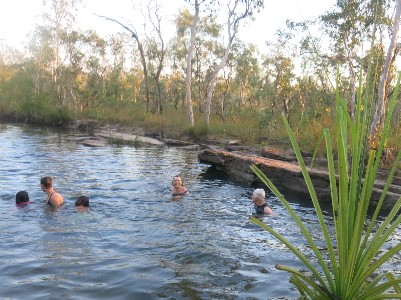 |
| Photograph Copyright by Rebecca Avery | Photograph Copyright by Rebecca Avery |
Swimming in a nearby waterhole was a regular afternoon activity for many of the visitors, and some of the Mäpuru children joined in, leading the way down a track, joyfully interacting with everyone and amongst themselves. After going to the Mangroves, a group decided to go swimming and, covered in grey dried mud, I went swimming too. We were just approaching the water’s edge and someone said: "Oh there's a snake!" The surprised snake speedily slithered into the water and hid beneath overhanging debris near the bank. Undaunted, everyone went into the water at a respectful distance from the snake, while some teenagers watched where it was and we all washed off the mangrove mud. By the time everyone left the water, I am sure the snake was kilometers away.
This natural approach to everything helped me overcome fears of things like snakes, crocodiles and later buffalo. Nevertheless, these animals are dangerous and need to be respected, by not putting ourselves in a position of danger. The water buffalo were introduced to northern Australia in the early part of the 19th century from South East Asia. This animal has since become feral and is considered dangerous. Going swimming I noticed lots of buffalo tracks where their hooves had ploughed up the once muddy ground, dried hard, potentially causing erosion. We were asked not to wander away by ourselves in the bush as there were buffalo out there.
| Figure 12. A Feral Water Buffalo on the Road | Figure 13. One of the Township Dogs |
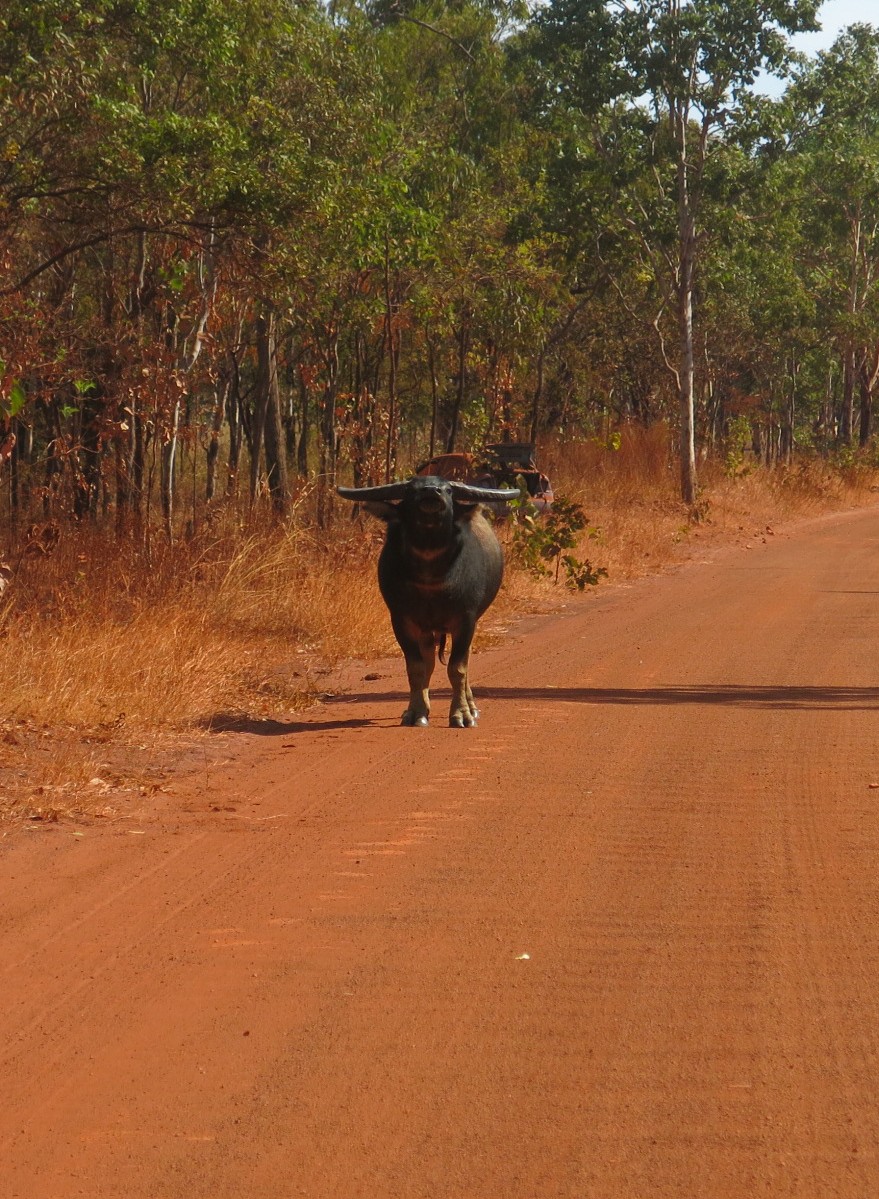 |
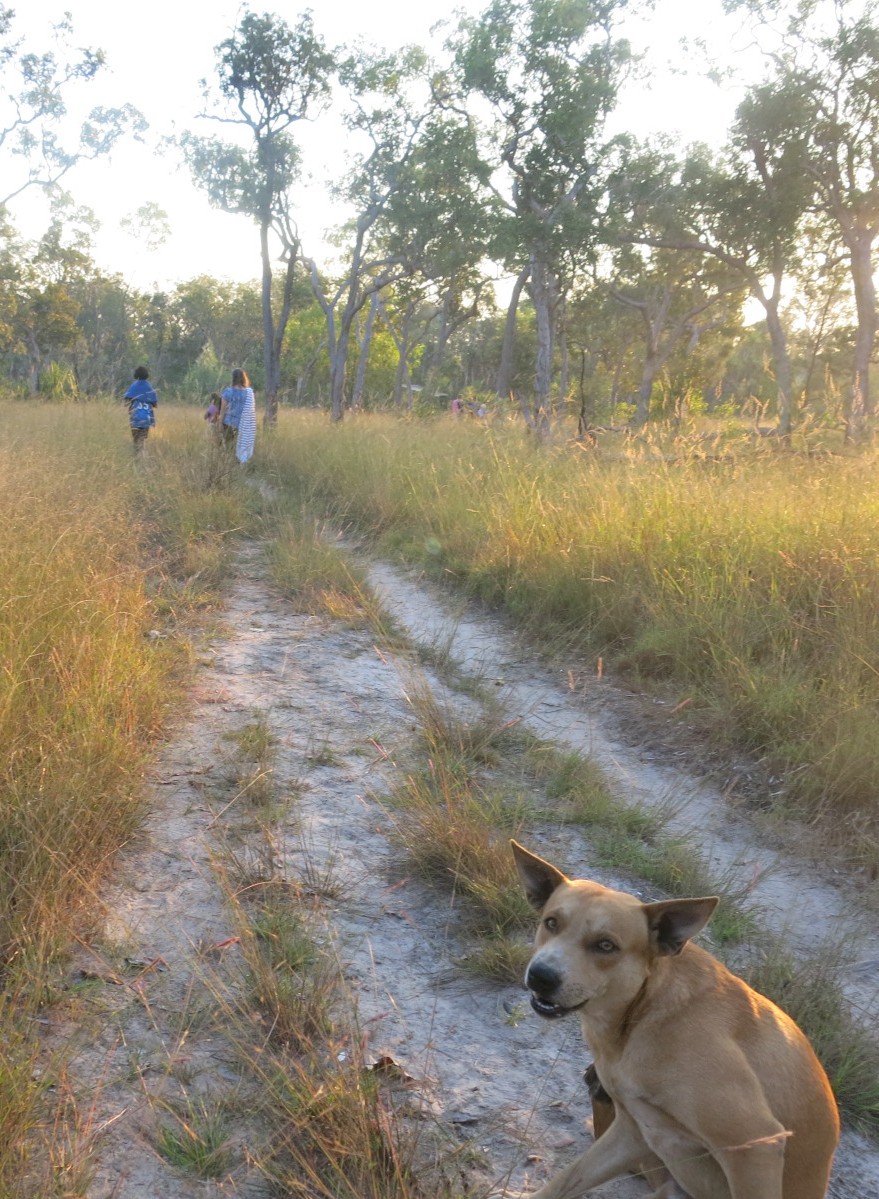 |
| Photograph Copyright by Rebecca Avery | Photograph Copyright by Rebecca Avery |
Some nights I heard the township dogs and dingoes howling with urgency. This to me was an eerie beautiful sound in the still moonlit darkness–ten or so dogs howling in all reverberations and pitches of canine vocals splitting the silence. I had a mental vision of a cathedral of sound with huge organ pipes of sound spiraling into the atmosphere with this assertive canine communication. This happened quite often and on one specific occasion I heard the dull thundering of the hooves of buffalos retreating from near the township–the dogs were guarding us all and I felt very safe. Later when talking to Roslyn Malngumba, a Mäpuru Elder, she confidently mentioned that the dogs keep them all safe. This is a special memory for me, and I can still clearly hear the sound.
At first light the crows seemed to start their welcome to the day and gradually other birds, like the Friar Birds, the Blue Winged Kookaburra, and parrots all seemed to appear and make themselves known. A tiny Forest Kingfisher appeared on a branch above my tent every morning and afternoon. This was so enchanting. The crows dominated in so many ways, getting into the rubbish bins, spreading it all around, wallowing in the opportunity to scavenge. Once we saw a crow in a tree with an empty 400g tin trying to get a last morsel of food from it–these big black birds have a reputation of being very intelligent and can solve problems very well. They have been part of my life all my life, from childhood and in every country I have visited around the world (though in modified forms and sounds), with associated local tales of their symbolism and mythological significance. I see them as friends.
Mäpuru has an independent school, funded by the Australian Federal Government as part of the Yirralka Education, which allows families and the community to administer the education of their children. It is a combined co-educational school from Years 1-10. The school is one of the central parts of the Mäpuru community and during the time we were at Mäpuru we helped with reading, in the mornings with the primary levels and visited the high school levels to do the same. We arrived when school started in the primary area, and initially we all did exercises, then teeth cleaning for the children, and then they chose a visitor to hear them read. This was fun, as it was in the high school levels, where, on the day I visited, we had a great game of Memory with the students, using Yulngu words.
The primary children prepared for our visit by planning an excursion to search for yams. The visitors were invited to come and we drove in 4WDs to where there were yams. The children took pride in showing us what to look for and how to identify the little creeper and flower that indicated the yams existed below the ground at that spot. They showed us how to follow the creeper down to the grass roots and how to dig close to it to reveal the yam, which is similar in size to a daffodil bulb. This was such fun too, as we were able to relate to the children in a more relaxed, less formal way than in the classroom. An impromptu fire was lit and the yams were cooked on the side of the road and we all had a taste. They were slightly like a sweet potato to taste.
Another enjoyable event at the school was an end of term Assembly. At this ceremony there were speeches and songs sung. Millie and Jackie, the co-Principals of the school, and Roslyn, conducted the Assembly. Certificates of Achievement were given out to the children of both primary and high school and the contributions of the teaching teams were recognized. The parents attended–thus supporting their children–and received certificates for different things they had done at the School.
I was also lucky enough to do some extra dyeing on some silk I had taken with me, with permission to use some of the natural local dyes being used to dye the pandanus leaves. I really enjoyed the natural way specific indigenous plants were gathered and used for dye, and quantities etc were very relaxed. It seemed like these expeditions to gather the plants were always something done in a group, not on an individual basis–it seemed to me, in everything, that the community worked together as a whole, and although the individual was extremely important, things worked for the common good together.
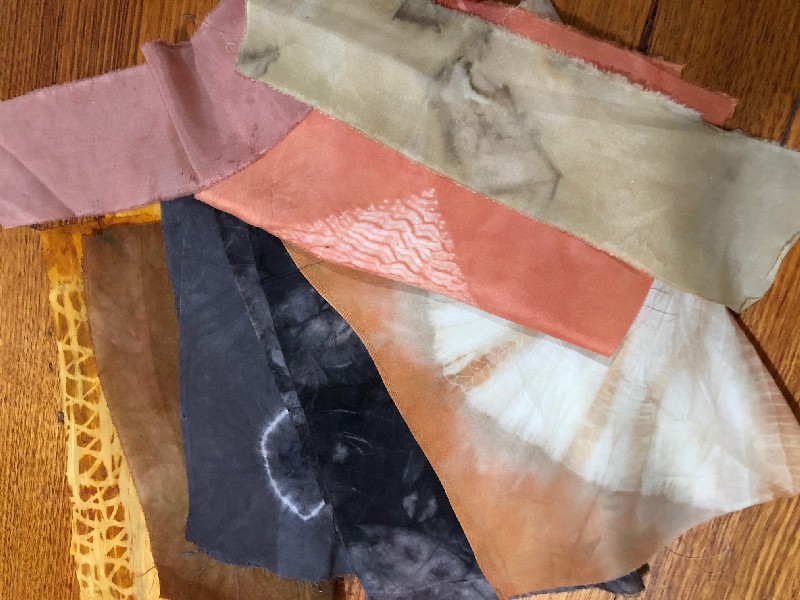
As the eight days drew to an end, our life had taken on a rhythm of its own, and it seemed very normal to be there at Mäpuru, sleeping in a tent, hearing the dogs, going to the school, talking to the Yolngu women weavers and the children. Everything seemed simple and just right.
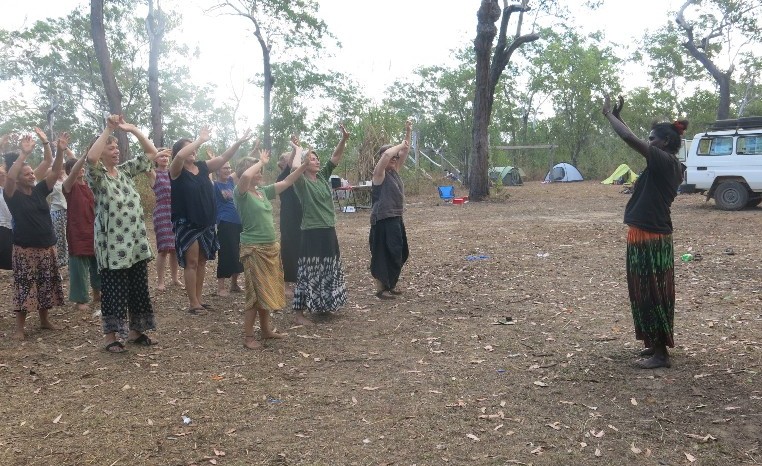
This was a special time in my life and I learnt a lot being there at Mäpuru. As well as new skills, I learnt more of what our wonderful planet holds for us if we care to look and treasure what we see. As we returned to Darwin, the bonding of friendships strengthened and the experience of our wonderful visit became a unique thing shared between us all.
| Figure 16. The End of the Journey | ||
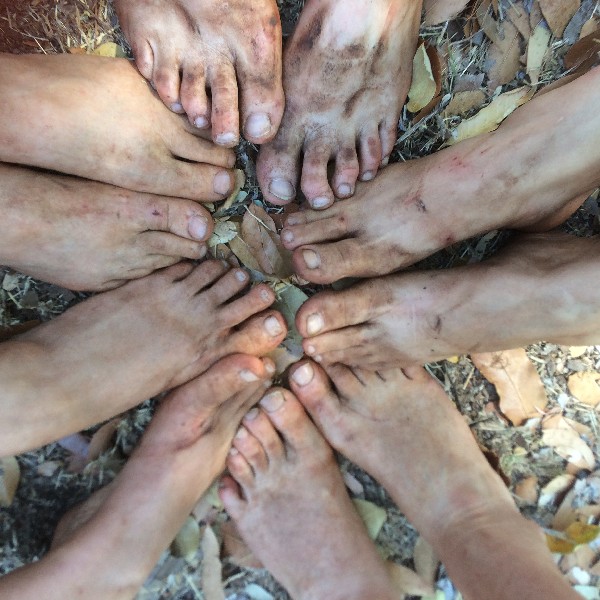 |
||
| Photograph Copyright by Rebecca Avery |
About the Author Margaret-Anne Gooch is an Australian artist with an avid interest in natural dyes, focusing mainly on indigo. She grows Polygonum tinctorium and is in the process of experimenting to make sukumo in a tumble composter. Margaret-Anne exhibits in the visual arts field, with her last solo exhibition Hidden Truth, where she looked at the relationship between the British colonists in the early 1800s and the indigenous Boon Wurrung peoples who lived in southern Victoria. Currently, she is undertaking a site specific art project called The Land Speaks–involving natural dye, visual art, stitch, film and sound–in which she is looking at the Land, Memory and Change, and Climate Change.
 Turkey Red Journal
Turkey Red Journal
